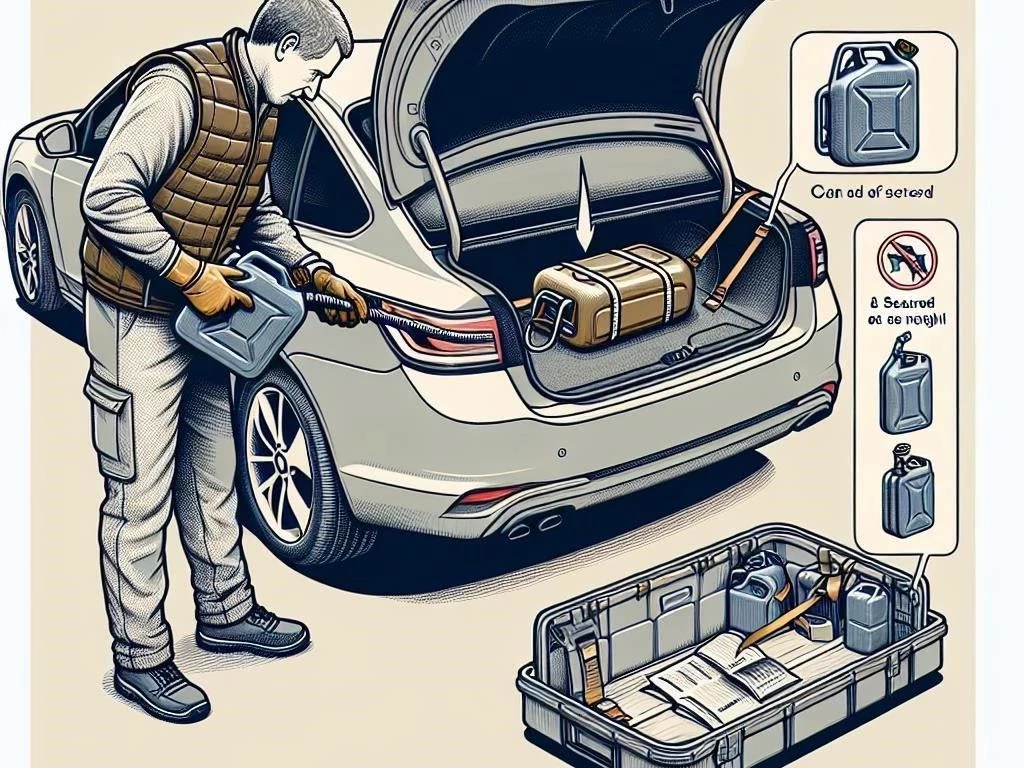Transporting a gas can safely in your car requires adherence to regulations, proper handling techniques, and understanding the risks involved․ Prioritize safety to prevent accidents and environmental damage․
Understanding Fuel Safety and Regulations
Familiarizing yourself with fuel safety and transportation regulations is essential when transporting a gasoline container․ Various governing bodies have established safety guidelines to mitigate risks associated with hazardous materials․ Start by checking local and federal regulations regarding fuel transport, as these may vary by region and vehicle type․ Ensure compliance with transportation regulations, which often dictate the type of container that may be used and the quantity of fuel allowed in a vehicle․ Adhering to safety guidelines will help reduce the risk of fire hazards and protect both the driver and the environment․ Additionally, consider spill prevention measures, such as using a well-designed fuel can that includes features to minimize leaks․ Always equip your vehicle with safety equipment, such as a fire extinguisher, and have an emergency preparedness plan in case of accidents․ Understanding these fundamental aspects of fuel safety will enhance your car transportation practices and ensure responsible gas can handling․
Choosing the Right Gasoline Container
Selecting the right gasoline container is crucial for safe fuel transport․ Look for a portable fuel can that meets safety standards, such as those set by Underwriters Laboratories (UL) or the American National Standards Institute (ANSI)․ Ensure the fuel can design includes features like a secure lid, spout, and a venting system to minimize the risk of spills and leaks․ Opt for a container made from durable materials that can withstand varying temperatures and potential impacts during car transportation․ Consider the size of the gas can; smaller containers are often easier to handle and store safely in your vehicle․ Additionally, check for any safety guidelines related to gas can handling, including proper labeling and warnings․ Avoid using old or damaged containers, as they may pose a significant fire hazard․ By making an informed choice, you can enhance fuel efficiency and ensure that your fuel transport complies with safety regulations, ultimately protecting both your vehicle and the environment․
Preparing Your Vehicle for Gas Can Storage
Before transporting a gasoline container, it is essential to prepare your vehicle adequately․ Start by cleaning the area where the gas can will be stored, ensuring that there are no flammable materials present, such as paper or cloth․ Designate a secure location in your vehicle, such as the trunk, where the gas can will not shift during transportation, reducing the risk of spills․ If your vehicle has a cargo area, consider using a protective mat to minimize contact with the vehicle’s interior․ Ensure that the gas can is upright and securely fastened to prevent movement․ Familiarize yourself with vehicle safety features, such as proper ventilation, to help dissipate any fumes that may escape during transit․ Additionally, review fuel transport tips, such as avoiding extreme temperatures, which can affect the integrity of the gasoline container․ By taking these precautions, you enhance both vehicle safety and the overall effectiveness of gas can storage during transportation․
Best Practices for Transporting Gas Cans
When transporting a gasoline container, following best practices is vital for ensuring safety and minimizing risks․ First and foremost, always use a gasoline container that meets safety regulations and is specifically designed for fuel transport․ Make sure the gas can is properly sealed to prevent leaks or spills․ During car transportation, keep the gas can upright and secure to avoid movement that could lead to accidents․ Avoid placing the gas can in the passenger compartment; instead, store it in the trunk or a designated cargo area․ Additionally, refrain from smoking or using any open flames near the vehicle while transporting fuel․ Be mindful of temperature changes, keeping the gas can out of direct sunlight or extreme heat, which can increase pressure inside the container․ Familiarize yourself with spill prevention techniques and be prepared with safety equipment, including a fire extinguisher․ These practices enhance vehicle safety and promote responsible gas can handling during transport․
Fuel Efficiency and Environmental Concerns
When transporting a gasoline container, it is important to consider both fuel efficiency and environmental concerns․ Proper fuel can storage and handling can significantly reduce emissions and potential spills, which harm the environment․ Choose a fuel container that minimizes evaporation, as this helps conserve fuel and reduces air pollution․ Be mindful of the amount of fuel you transport; carrying unnecessary weight can decrease your vehicle’s fuel efficiency, leading to higher fuel consumption․ Additionally, always ensure that the gasoline container is in good condition, as leaks can pose environmental hazards and contribute to soil and water contamination․ Adhering to transportation regulations not only enhances vehicle safety but also protects the environment․ Educate yourself on hazardous materials handling to ensure compliance with local laws․ By implementing these practices, you can contribute to sustainable fuel transport and demonstrate responsibility toward environmental stewardship while ensuring efficient automotive care during gas can transport․

